How is gas connected to a private house: input device + system installation
Do you want to connect the house to a centralized gas supply? But this welcome event can take a lot of time, effort and money, right? Do you want the gasification of your household to go without unnecessary nerves and fines, but don’t know how to act?
We will help you deal with the procedure in order to connect gas to a private house as soon as possible and without problems. The article covers all stages, from documenting to putting the installed system into operation. Visual photographs and informative videos were selected.
Understanding the features of this process will allow you to manage your resources with greater benefit - after all, earthwork can be done on their own. But for the insertion, the participation of a gas service worker with special clearance will be required. Knowledge of the installation features of gas communications will not hurt.
The content of the article:
Features of gasification of residential buildings
With the help of gas in the house, it is possible to successfully organize both heating, and heating of hot water, and cooking. Gas equipment is reliable and diverse, and the cost of blue fuel is usually lower than the use of electricity, solid or liquid fuel for the same purpose.
In addition, gas pipelines fail extremely rarely, but power outages are common. The stocks of firewood, coal, diesel fuel and other similar energy carriers have to be constantly replenished.
The main problem with natural gas is its danger to human health and its ability to explode. Even a small leak can lead to poisoning or explosion. That is why the requirements for the installation of gas communications are very high, you should not even think about doing all the work yourself.
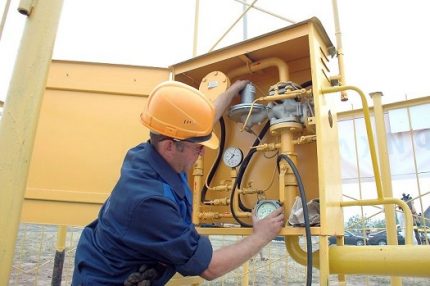
To begin with, experts do not recommend saving on materials or system elements. Laying pipes of dubious quality and unprofessional installation are unacceptable.
Gas pipes almost always need to be laid in an open way (except for underground sections of the pipeline). They can not be hidden under any decorative elements to improve the interior.
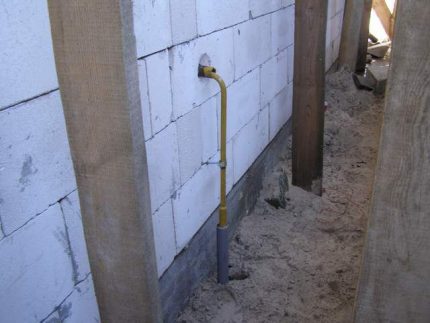
It is recommended that you avoid plug connections if possible. All places in which the pipes are connected must be located so that at any time the contact point can be inspected and repaired if necessary.
Do not lay gas pipes inside the walls or in the thickness of the foundation. This rule also applies to other elements, such as platbands, door frames, window frames, partitions, etc.
In some cases, it is allowed to lay a gas pipe in a wall niche, but this point should be clearly reflected and justified in the design. Special requirements apply to the slope of the pipes. Horizontal deviation of the line position is allowed only 3 mm in the direction of gas appliances.
Vertically, no deviations are allowed, but the riser may have a slight slope: not more than 2 mm per meter. It must not pass through living quarters, through a toilet or bathroom. The gas riser should be located on the stairwell, often it is carried through the kitchen.
Carefully have to follow the installation of stopcocks. So, the position of the central axis of the tube should be strictly parallel to the wall along which the pipe passes. When choosing the position of the crane, make sure that the position of the locking device is not blocked by the wall. From the ceiling and from the walls the gas pipe should be located at a distance of 100 mm.
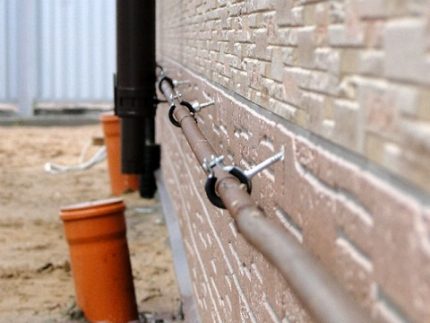
The gap between the wall and the pipe can vary from the radius of the pipe to a limit value of 100 mm. This clearance is necessary so that the structure can be freely examined. A distance of 2.2 m should be maintained from the floor. Gas pipes are placed on special strong supports, the sagging of the structure is unacceptable.
Therefore, make sure that there are no gaps between the bracket and the pipe. All these important points are taken into account in gas supply system design, which must be pre-compiled by specialist engineers.
Gas pipes should be run no less than 30 cm from the electrical panel, and no less than 25 cm from open wiring. At least five centimeters should be retreated from the hidden cable.
Gasification of home ownership step by step
When figuring out how to connect natural gas to a private house, one should take into account the lengthy procedure for processing various documents.
Stage # 1 - Gasification Documentation
First, the owner will have to submit an application with a request for gasification of the house, to which you need to attach documents on the ownership of both the house and the plot, as well as all the available technical documentation regarding these objects.
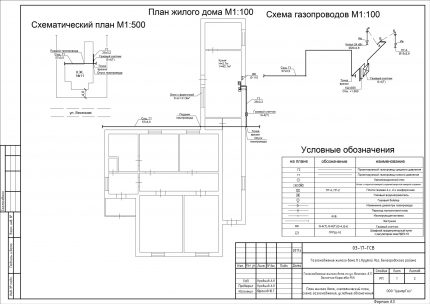
After this, specialists must examine the site and the house in order to draw up a document called technical conditions. At the same stage, it should be clarified whether it is necessary to lay part of the highway through sections of neighbors.
It is better to immediately discuss this point with them, get permission and coordinate the features of the work. In this way, many problems and delays can be avoided.
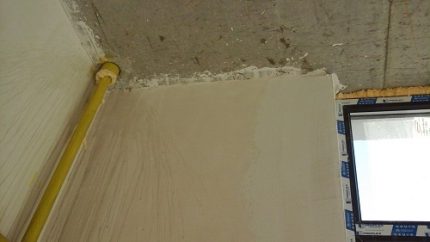
Based on the technical conditions, a package of design documentation for gasification of a concrete house and plot. Only after that it will be possible to hire a contractor for a range of installation works.
The installation of the external and internal parts of the gas pipeline, its connection to a common highway, the connection of gas equipment and other important stages will be carried out.
In the process, you will have to draw up a number of important agreements, such as:
- to conduct research and design specifications for designers;
- on the preparation of project documentation;
- to perform installation work on laying internal and external water supply;
- for the supply of natural gas, etc.
In addition, a number of permits must be obtained. For example, you will need permission to gasify the site from the local architectural office.
And also it is necessary to invite specialists who examine the chimney existing in the house (or arranged specifically for a gas boiler and other gas appliances). The satisfactory condition of the structure is confirmed by the relevant act.
With the cost of connecting a suburban area with a house to a centralized gas supply will introduce the articlefully dedicated to this subject.
Stage # 2 - supply of the pipeline to the house
Almost all the elements, devices and materials that will be used in the gasification process should have quality certificates. For gas pipeline installation usually recommend the use of pipes made of low alloy or mild steel. The diameter of the structure should be 150 mm with a wall thickness of 5 mm.
The use of non-galvanized seamless steel alloy pipes is allowed.The pipeline is assembled by welding, the quality of which for individual sections of the pipeline should be impeccable. At the points of installation of stop valves, threaded connections are used.
In addition to steel pipes for the installation of gas pipeline systems in recent years, polyethylene constructions have been increasingly used. They are lighter in weight, they are easier to mount, they are good at resisting cold, heat, aggressive chemicals, they do not conduct electric current, etc.
When laying polyethylene pipes in the ground, you can do without additional protective measures, as is done for steel structures. However, plastic is used only for the installation of an external gas pipeline, the entry into the house and the internal system must be metal. Plastic is also not applicable in areas with very severe winters and increased seismic hazard.
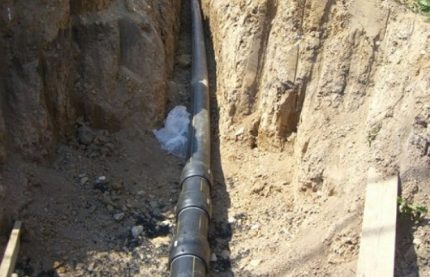
For obvious reasons, laying a gas pipeline is more expensive, but if it is done correctly, then such a pipe will be reliably protected from extraneous influence and accidental damage.
If the pipe needs to be led across the road, then the contractor will have to block the road and draw up a diagram of traffic to bypass. The scheme is approved by the local traffic police department, on the basis of which the contractor receives a warrant.
It is recommended to give preference to ground laying of the gas pipeline in areas where the soil has increased corrosion characteristics, but if power lines are located nearby, it is better to give preference to underground utilities.
Both types of laying can be combined in one section, for example, through the road to carry a gas pipeline underground, through the territory of the neighboring section - above the ground, etc.
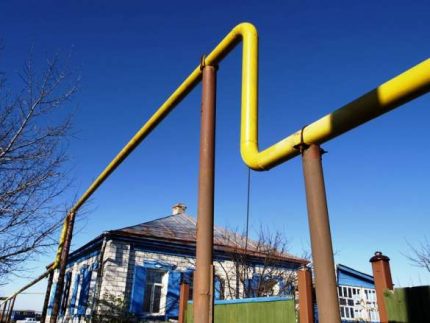
After the project is ready, you can proceed directly to the installation work. Of course, they will be carried out by specialists who have the necessary training and equipment.
Stage # 3 - equipping the boiler room
But even before the gas pipeline is laid, it is recommended to take care of the rooms where gas appliances will be installed: gas floor boiler or wall speaker, stove, etc.
Both the boiler room and the kitchen should have a window that can be opened at any time for ventilation. The opening area should be at least half a square meter. The height of the ceilings should be at least 220 cm. Doors should be made opening not inward but outward.
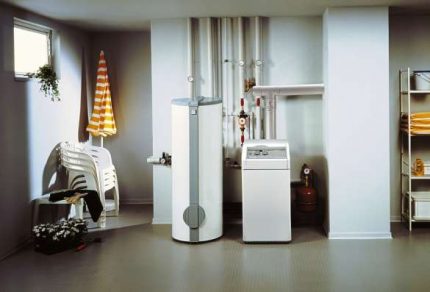
Please note that the number of burners on a gas stove depends on the size of the kitchen. So, in a room with an area of less than eight square meters, it is allowed to install only stoves with two rings, for a stove for three rings, at least 12 square meters are required. m, for a four-burner device - at least 15 square meters. m etc.
If the boiler power exceeds 30 kW, you will need to build a boiler room for it, located at some distance from the house. Good forced ventilation should be provided here, and walls, floors and ceilings should be decorated with fire-resistant materials.
Do not use the boiler room as a storage room, the presence of foreign objects and materials can cause an accident.
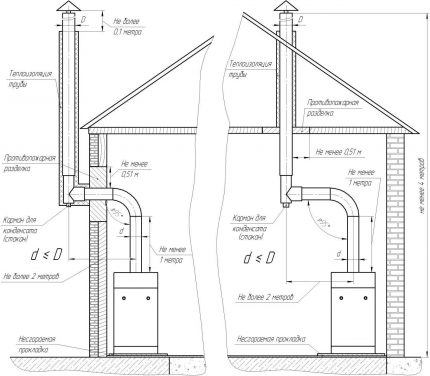
Water must be brought to the boiler room, which is located in the house, as well as a sensor to determine the level of carbon monoxide in the air. It is recommended to install an alarm system that shuts off the gas supply in the event of a leak. Do not install more than two low-power boilers in one boiler room.
For a 30 kW device, a room of at least three cubic meters is required, for boilers of high power, more than 60 kW, at least 11.5 cubic meters are needed. m of space. People should not be in the boiler room for more than four hours a day.
The flooring, walls and ceiling in the boiler room must be not only resistant to fire, but also not producing dust. Dirt often causes breakdowns in gas equipment.
A prerequisite for connecting to the main gas supply is to install gas meter. The rules for choosing a gas flow meter and the specifics of its installation will be introduced by our recommended article.
Stage # 4 - entering communications into the house
In order to correctly introduce gas into the house during installation of its own gas supply system, a hole is made in the lower part of one of the external walls, but not in the thickness of the foundation.
First, an insert in the form of a steel sleeve is inserted into the hole, and then a pipe is introduced into the house through it. The main riser and the internal gas pipeline are then connected to it.
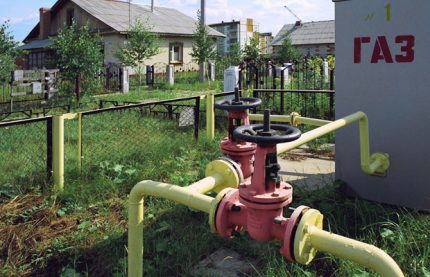
The riser is usually placed vertically, retreating from the wall by 15 cm and securing it with special hooks to fix the vertical position. The pipe is installed under a slight slope to it.
All places where gas pipes pass through walls deserve special attention. The holes must be made large enough, because they also need to put in protective sleeves through which the pipes are led.
Previously, all sections of communications that will be in the wall should be covered with several layers of oil paint. The gap between the surface of the pipe and the sleeve should be laid with a layer of tow soaked in resin, and also filled with a layer of bitumen.
In this case, you need to make sure that there are no places in the wall that are connected by welding or thread. In the thickness of the wall can be only one piece pipe.
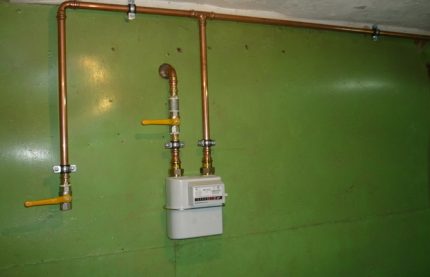
The fewer connections in the gas pipeline, the more sections of solid pipes, the better for the safety of the structure. In order not to cut the structure, when it needs to be bent and change direction, it is allowed to heat the area with a gas burner, but this method should not be abused.
Separate parts of the gas pipeline are connected on the ground, then pipes are installed along the walls, connected, fixed with special brackets. Narrow pipes, less than 40 mm in diameter, can be fixed to the wall using clamps or special brackets.
Thicker structures are hung on brackets, as mentioned above. In any case, you need to firmly fix such fasteners in the wall with concrete mortar and wooden corks.
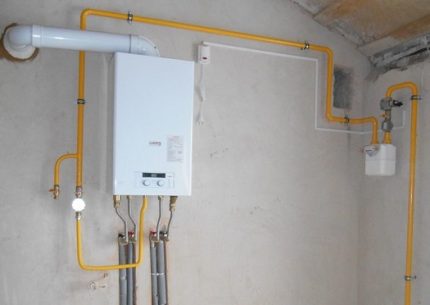
Welding gas pipes is a special art. To make the seam really smooth and durable, it is necessary to carefully prepare the joined surfaces. The edges of the communications should be cut, aligned and smoothed by one centimeter. Only then can welding be started. High quality electrodes are recommended.
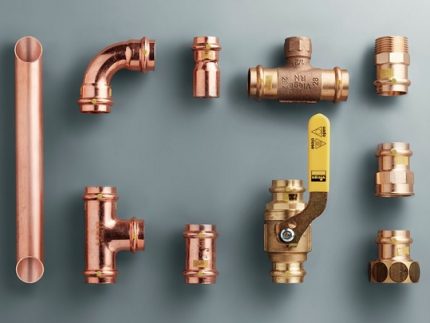
Threaded connections should be made as small as possible.They must be carefully sealed to eliminate any risk of gas leakage. First, the thread is treated with whitewash, then a sealant is wound on it (linen thread, FUM tape, etc.), only then screw the connection.
Stage # 5 - test run and final events
After assembling the system and introducing gas into a private house, you will have to go through a number of final activities. Before starting and setting up the equipment, home owners must be instructed in safety measures. To lay the internal and external gas pipelines, you can invite either one contractor or two different ones if you wish.
It can be both specialists of the local gas organization, and third-party organizations that have the appropriate licenses. But a direct connection to the main gas pipeline should be carried out by a separate insert service.
After that, the first start of gas into the system is performed and leak check. This service is paid separately. By this moment, an agreement on the maintenance of existing gas equipment should already be concluded.
After the first start-up of gas, the specialist of the service company must carry out the adjustment of such equipment, this is an important point on which the validity of warranty obligations depends.
If for some good reason connection to the gas main system is not yet possible, pay attention to option c gas tank installation. It is possible that at the moment this method of organizing the supply of gas to the house for you personally will be more attractive.
Conclusions and useful video on the topic
Detailed information on the gasification of a private house is presented in this video:
It contains practical tips to help you avoid common mistakes in the gas installation process:
The gasification of any facility is a job for professionals with the appropriate skills and licenses. The owner of the site has the obligation to draw up the necessary documents, select a contractor, etc..
The whole procedure is usually costly, but the result is worth the money and effort.
Please write comments, ask questions, post photos on the topic in the block below. Tell us about how you connected your site to a centralized gas supply. It is possible that your experience will be useful to site visitors who have to go a similar path.

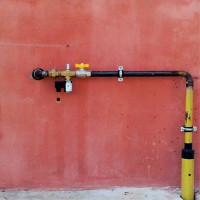 Laying a gas pipeline in a case through a wall: the specifics of a device for introducing a pipe for gas into a house
Laying a gas pipeline in a case through a wall: the specifics of a device for introducing a pipe for gas into a house 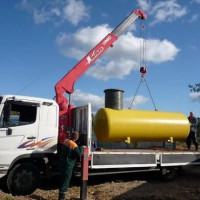 Turnkey gas holder: how to install a gas tank and install equipment
Turnkey gas holder: how to install a gas tank and install equipment 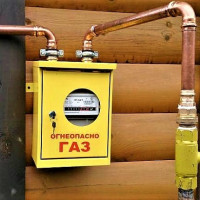 Copper pipes for gas: specifics and norms for laying a copper pipeline
Copper pipes for gas: specifics and norms for laying a copper pipeline 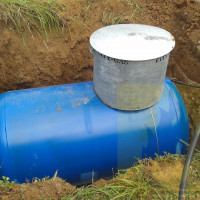 Autonomous gasification of a private house: arrangement of a gas supply system for cylinders and a gas tank
Autonomous gasification of a private house: arrangement of a gas supply system for cylinders and a gas tank  Gas hob connection: safe connection instruction
Gas hob connection: safe connection instruction 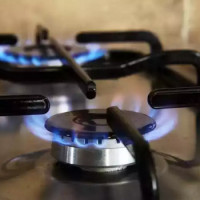 DIY gas stove connection: how to install a gas stove in an apartment step by step
DIY gas stove connection: how to install a gas stove in an apartment step by step  How much does it cost to connect gas to a private house: the price of organizing gas supply
How much does it cost to connect gas to a private house: the price of organizing gas supply  The best washing machines with dryer: model rating and customer tips
The best washing machines with dryer: model rating and customer tips  What is the color temperature of light and the nuances of choosing the temperature of the lamps to suit your needs
What is the color temperature of light and the nuances of choosing the temperature of the lamps to suit your needs  Replacement of a geyser in an apartment: replacement paperwork + basic norms and requirements
Replacement of a geyser in an apartment: replacement paperwork + basic norms and requirements
Gas workers have their own tricks that they use to their advantage. And the increased cost of connection is not the worst of their methods. They like to save materials. I was on earnings when the pipeline was installed. So: trunk pipes now pass through my yard. Neither to put a barn, nor to make a garage. According to the initial calculations, as I already know, they had to go around my yard. But the wife signed their plan, which they made already in place. They said everything, she did not understand. Now, if you have to redo the laid section of the pipeline, then only at your own expense. They secured themselves, they have nothing to present. Be careful not to be in the same situation.
I, too, experienced all the delights of butting with gas workers, having inherited a house in the suburbs. There is gas in the village, but there is no tie-in to us, although the pipe goes over my gate. Such a sum was bent to me on the sidebar project that I already sat down.
And what to do, they are monopolists on all gas works, so there are no options. I had to fork out for the project, and the sidebar for all the work, and the meter, and even the start-up of the boiler, was torn off.
They also counted their materials, at very high prices, as if they had gold pipes.
Yes, gas workers are trying to shove a larger amount, and if the owner is not indignant and pays, then they are happy. After the examination of the project there should be a recount of the price down. It’s possible to save decently if you deal with all the approvals yourself. But you have to figure it out and run around.
This is just the ordeal through which we have to go through! Put alarms, paint the pipes yellow, no, you didn’t install it that way, rearrange them! Where does a pensioner get so much money, people make ends meet. Such fabulous bills are issued that now, when the arch is at home, you see if they needed a door! I have no words. Sore.
Hello. All documents with items about doors in the furnace are no longer valid. But the gas men will still be right, they will take and refer to the fact that the ventilation standards are not provided, and in addition to the fact that your gasified room communicates with the residential, which is prohibited by the standards. We sympathize with you, hold on, be patient.
The descent of snow from the roof of the house to the gas pipe is not uncommon. There are examples on the Internet. Project defect - a gas pipe is supplied to the house in the area where the snow is falling. Corrections are needed in the regulatory documentation. Otherwise a rake, a rake, a rake.